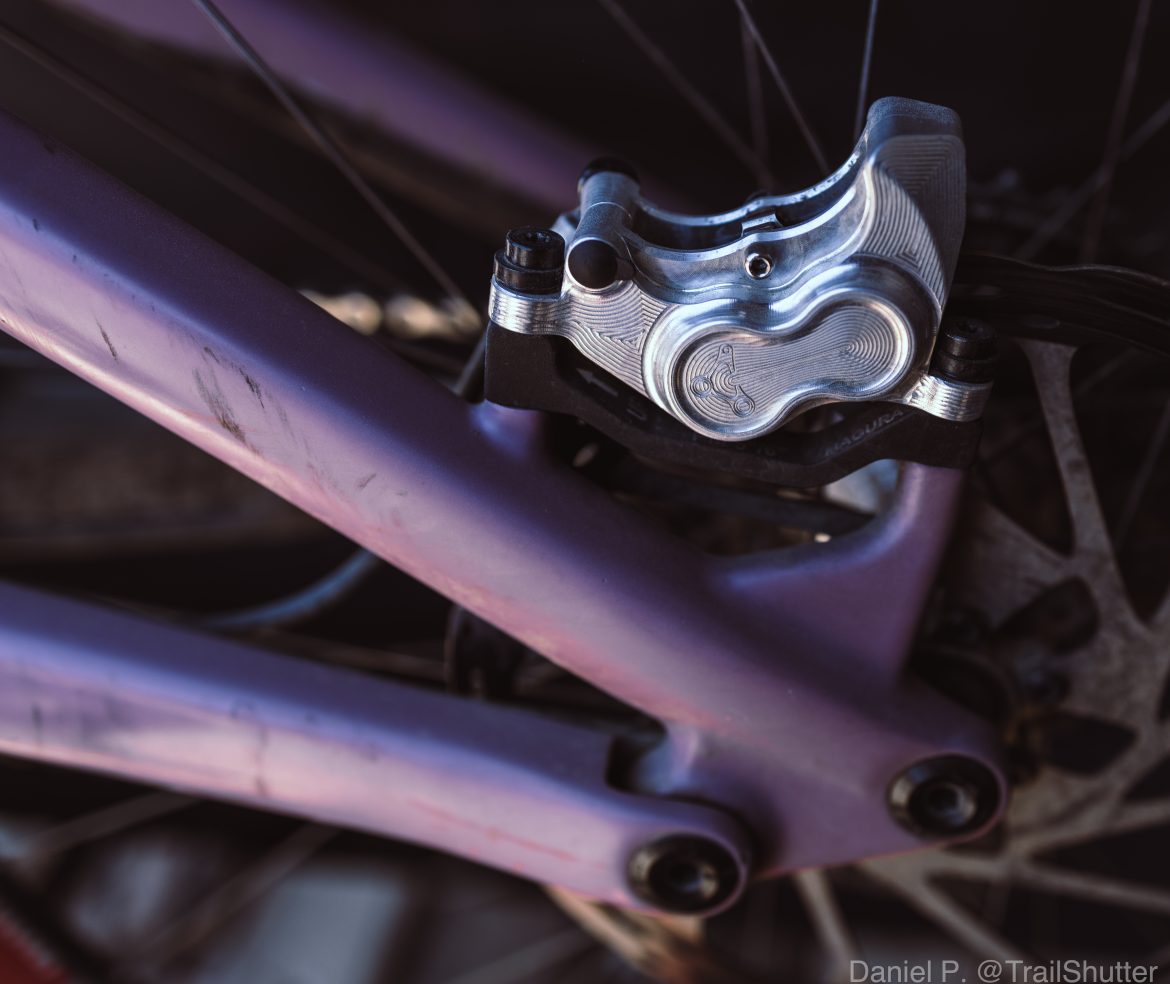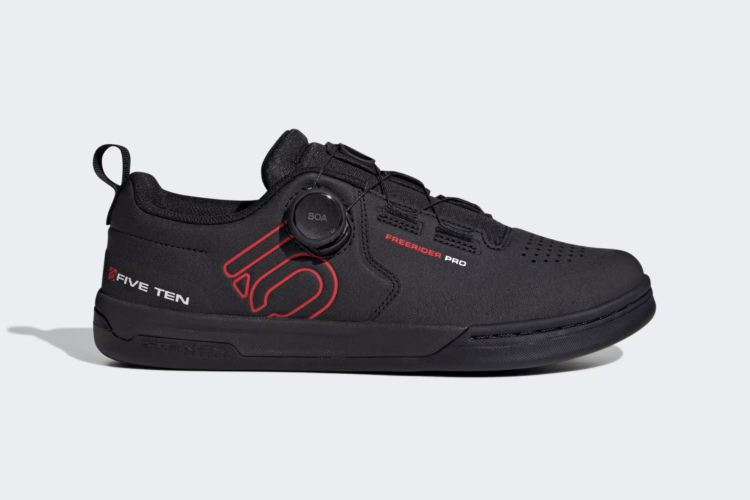The folks at Cascade Components are passionate about making our trail toys better, and they have been turning out links to adjust suspension kinematics for some time now. Their CNC’d aftermarket links typically increase the progressivity of a frame’s rear suspension and sometimes lengthen the wheelbase and rear travel while they’re at it. Check out our recent bio with the brand for additional details on their work.
The Pacific Northwest based engineers have recently taken a break from links to focus on adding power to the SRAM Code brakes that came on their bikes, and they will soon have sets available for the masses. Founding engineer Jimmy Davis says that he wanted to get more power from the Code system, while maintaining the weight, bleed style, and broad modulation that the brakes are loved for. Davis says that “the main thing I wanted was to make my brakes perform better on longer race laps. So, a combination of decreasing fatigue, and these handle heat a little bit better so when they do get hot they don’t really reach that point where you have to keep squeezing harder.” His solution: the new North Fork Brake Caliper.
The North Fork calipers achieve that power increase with a larger piston compared to the stock SRAM Code set. Davis says that the system’s braking power is increased by 20% for a given brake-line pressure. Those pistons are made from the same material as the SRAM sets, and use stock parts to keep them easily rebuildable. All of the seals are identical, and can be purchased with any SRAM rebuild kit, the pad fit is the same, and the Cascade calipers can be flushed with the SRAM Bleeding Edge tools.
Cascade’s North Fork calipers use one set of 16mm pistons, like the stock Code model, and a second larger 18mm set that give them the power boost. SRAM has road calipers that also use an 18mm piston, so again there are no proprietary parts involved. Davis said that they could have made production easier on themselves by using stainless steel pistons, but they wanted to steer clear of proprietary parts so he found a manufacturer to create pistons from the same material SRAM uses. Additionally, he says that steel pistons run 10% hotter, and he doesn’t want to cut any corners with his top-shelf components. For heavier riders, that heat difference could push the overall fluid temp past its optimal level, which further justifies not using stainless pistons.
The North Fork calipers add 18g to each brake, which seems well worth the 20% power increase. With slightly more surface area and a touch more DOT fluid in the system they will likely manage heat a little better than the standard caliper. The development process involved loads of heat and power testing to make sure they were moving in the right direction, and Davis is pleased with the outcome.
Davis says that the bleed process is a little different with his calipers. “It’s designed so that if the post mount surfaces are held perfectly vertical, all of the bubbles can float to the top of the caliper.” A lot of brake brands don’t share specific caliper positioning in their bleed instructions, and this may also be the optimal procedure for Code calipers.
The brand doesn’t seem interested in re/designing things that are working well, so they will leave the rest of the Code brakes alone for the time being. They do, however, offer a Brake Cam Set that changes the rate that a Code and Guide master cylinder will depress, creating a more progressive lever feel. Davis says that these cam bits don’t improve the SRAM brake system, but provide a different feel that some riders prefer. He likens the lever feel with his alloy cam system to that of a TRP four-piston system.
Pad compounds and fit are also important factors when developing calipers and Davis says that they tried a wide range of rotors and pads to reach a quiet and powerful balance. He mentioned that while some aftermarket pads offer a little better stopping power the availability of stock SRAM pads has him ordering those every time. Living in the PNW, he goes through pads quickly, making availability a key consideration.
North Fork Brake Calipers should be hot on the market in a few weeks, retailing for $283, and they can be coated in black, purple, or nickel.





















1 Comments
Oct 30, 2021
A note on DOT fluid. While this fluid is reliable it does absorb moisture and air through exposure and storage. Degassing DOT before use is a requirement, not an option. Cleanup is simple, water! It is water soluble, rinse any spillage immediately following service. Transport your bike on the exterior of your car in rainy weather? Bag the levers! 75 MPH on the interstate will drive rain right past the seals and destroy a brake system regardless of fluid type in use.
DOT fluid can damage painted surfaces however, a quality anodize will be unaffected by DOT.